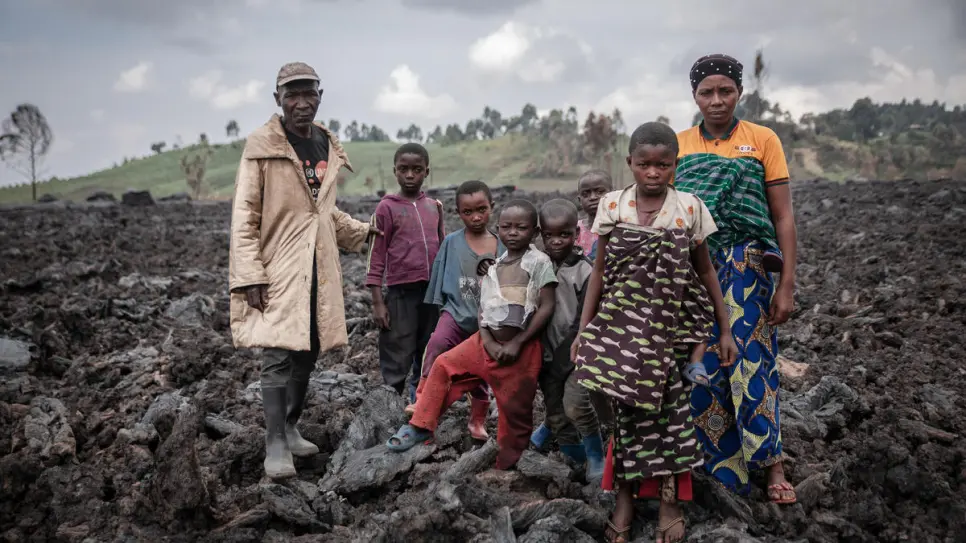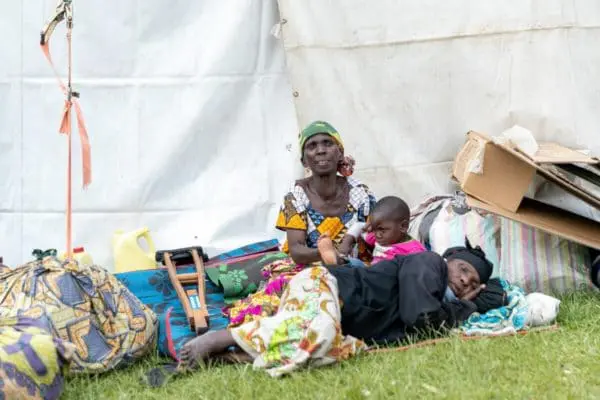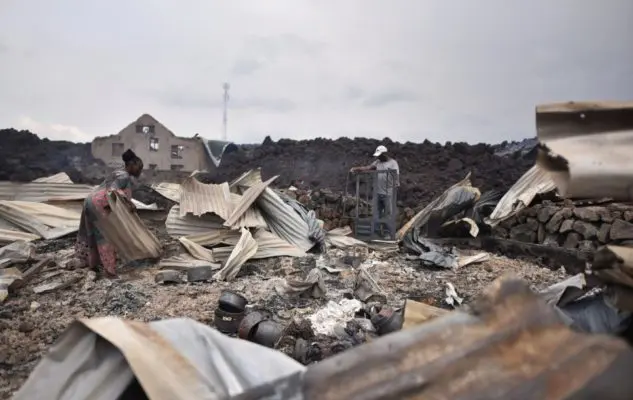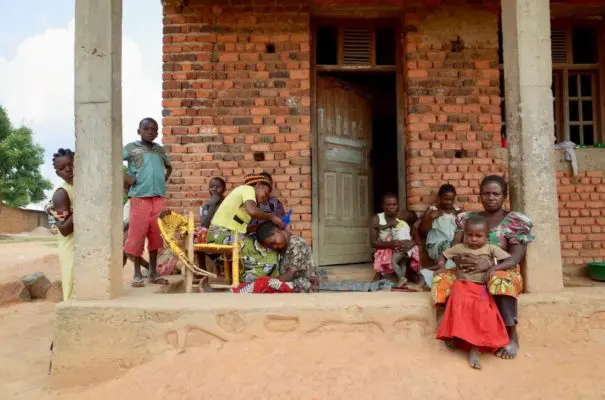
Jean and Esperance Muhoza and their seven children stand on volcanic rock where their home used to stand. © UNHCR/Guerchom Ndebo
Families displaced after this May’s eruption of Mount Nyiragongo in eastern DRC need urgent support as they face extreme difficulties while striving to rebuild their lives.
By Sanne Biesmans in Sake, the Democratic Republic of the Congo
Paul Bapolosi will never forget how shocked he was when he saw red hot lava pouring down Mount Nyiragongo, which overlooks the city of Goma in eastern Democratic Republic of the Congo.
Paralysed from the waist down and wheelchair-bound since he was a child, Paul, 48, had to be pushed to safety by his wife and children. They joined tens of thousands of people who escaped when the volcano erupted unexpectedly on 22 May.
“Without my family, I don’t know if I would have been able to flee. I am lucky to be alive and so proud we all made it to safety together,” says Paul.
His wife and children pushed him all night, for over twelve gruelling hours to Sake, a town 25 kilometres west of Goma.
“I am lucky to be alive.”
“The road was bumpy and long and our children were so tired. It was not easy at all,” recalls his wife, Francine.
Paul’s family found shelter in a school hosting 300 displaced people, including over 100 people with reduced mobility. Some, like Paul, fled in wheelchairs, while others walked on crutches or used simple canes.
As the lava begins to cool, the government is encouraging people to return to their homes, but many say they have lost all their property and need assistance to rebuild their lives. Others, like Paul, do not know whether the homes they left behind will still be available.
“I didn’t have my own home so I don’t know if my landlord will be there when we return or if he will have given out our house to another tenant,” says Paul.
Mount Nyiragongo is one of the world’s most active and deadly volcanos. Over 170 people were killed when it last erupted in 2002 and the lava spread to many neighbourhoods, destroying property and homes.





